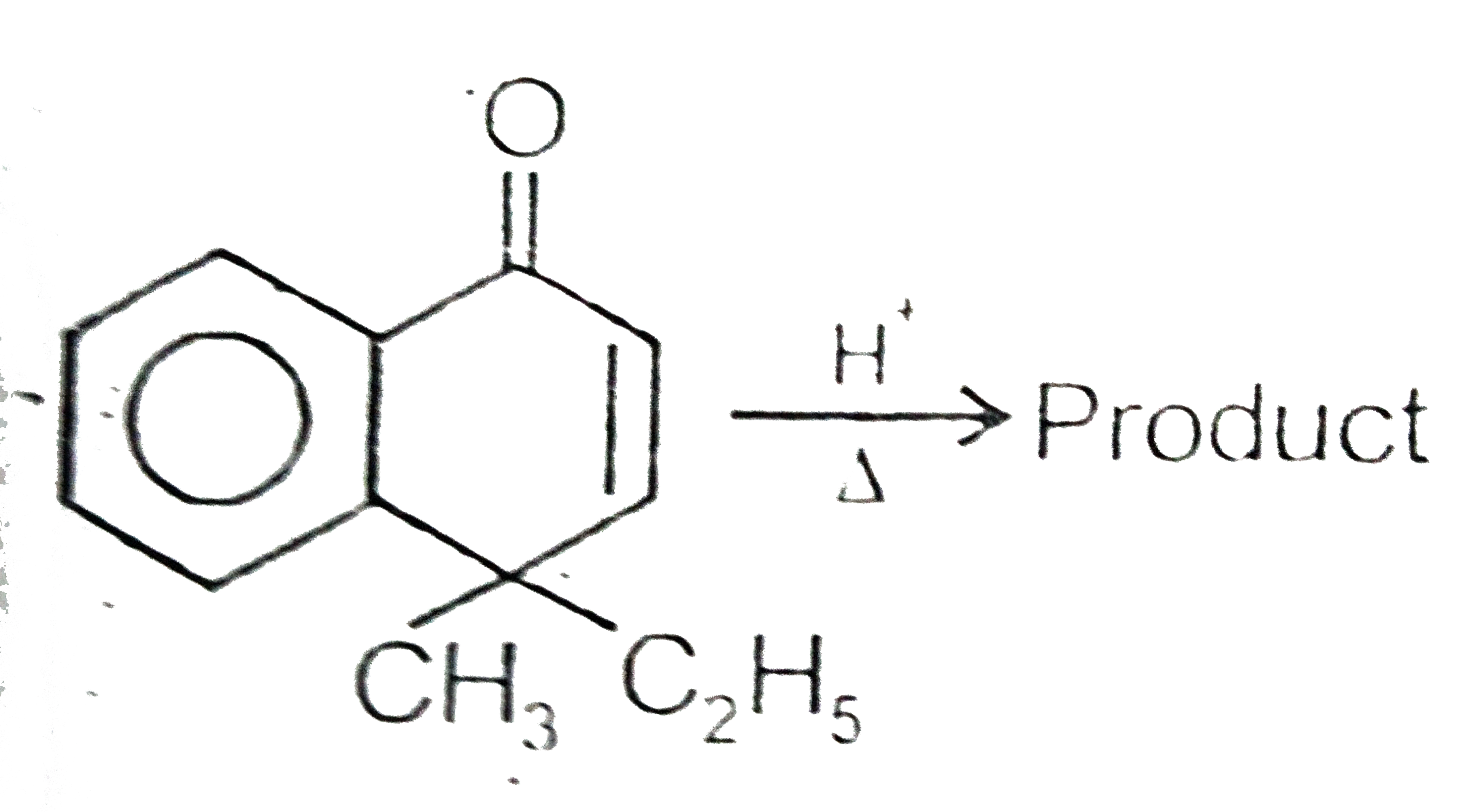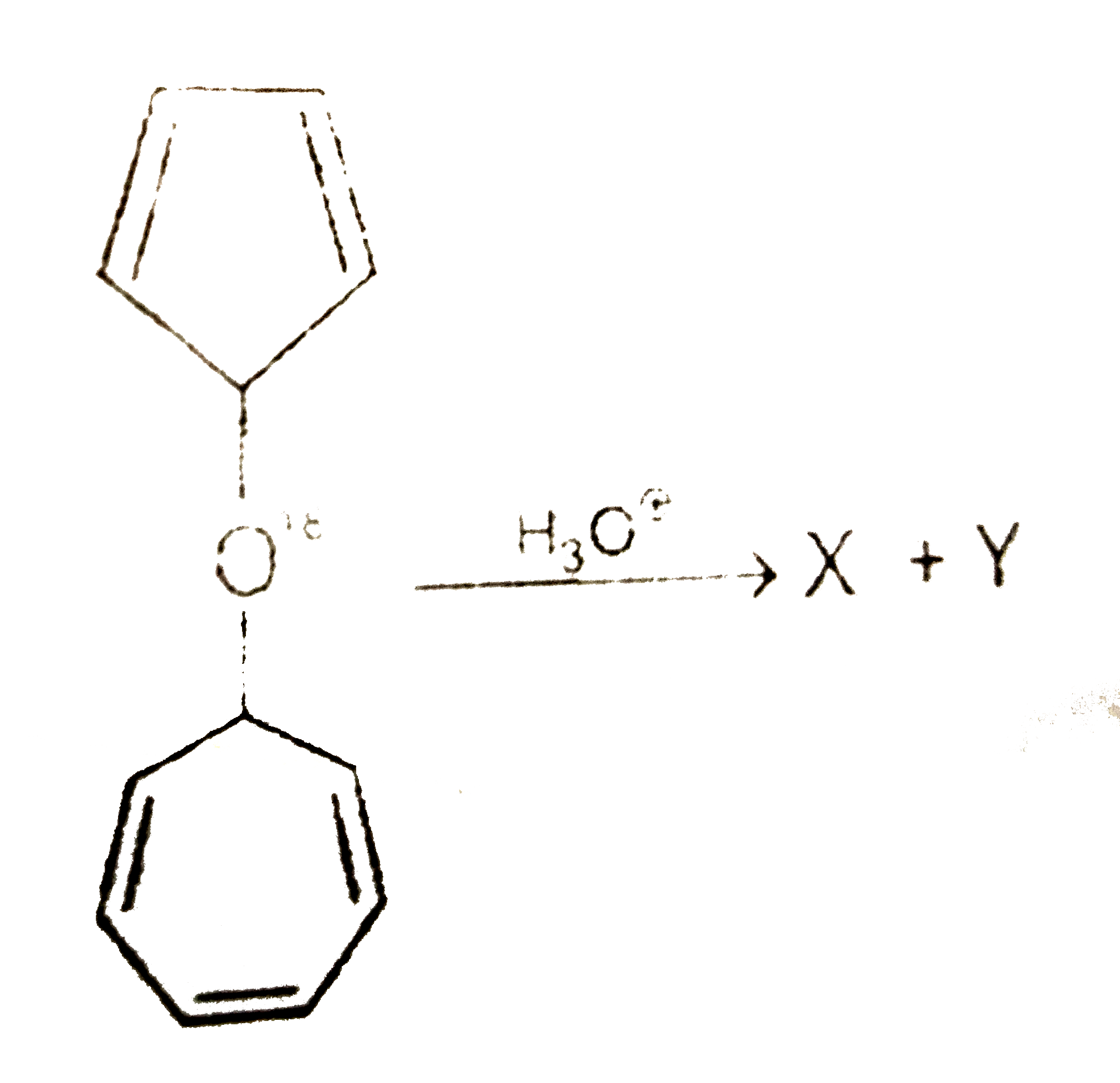FeC2O4Δ−−→ products
Number of diamagnetic products=x
Number of unpaired electrons in paramagnetic products=y
report your answer as (x+y)
The correct Answer is:6
To solve the problem, we need to analyze the thermal decomposition of iron(II) oxalate, FeC₂O₄, and identify the products formed, as well as their magnetic properties.
1. Identify the Reaction:
When FeC₂O₄ is heated, it decomposes into:
FeC2O4Δ−→FeO+CO+CO2
The products are iron(II) oxide (FeO), carbon monoxide (CO), and carbon dioxide (CO₂).
2. Determine Diamagnetic Products:
- CO (Carbon Monoxide): CO is a stable molecule with no unpaired electrons, making it diamagnetic.
- CO₂ (Carbon Dioxide): CO₂ is also a stable molecule with no unpaired electrons, hence it is diamagnetic.
- FeO (Iron(II) Oxide): We need to check if FeO is diamagnetic or paramagnetic.
Since CO and CO₂ are diamagnetic, we have:
x=2(number of diamagnetic products)
3. Determine the Magnetic Properties of FeO:
- The oxidation state of Fe in FeO is +2. The electronic configuration of Fe²⁺ is:
Fe2+:(Ar)3d6
- In the 3d subshell, the distribution of electrons is as follows:
- 5 electrons will fill the first five orbitals (3d), and the sixth electron will occupy one of the orbitals, resulting in:
↑↓↑↑↑↑
- This means there are 4 unpaired electrons in FeO.
Therefore, FeO is paramagnetic, and we have:
y=4(number of unpaired electrons in paramagnetic product)
4. Final Calculation:
Now, we need to report the final answer as x+y:
x+y=2+4=6
Final Answer:
The answer is 6.
When FeC₂O₄ is heated, it decomposes into:
FeC2O4Δ−→FeO+CO+CO2
The products are iron(II) oxide (FeO), carbon monoxide (CO), and carbon dioxide (CO₂).
- CO (Carbon Monoxide): CO is a stable molecule with no unpaired electrons, making it diamagnetic.
- CO₂ (Carbon Dioxide): CO₂ is also a stable molecule with no unpaired electrons, hence it is diamagnetic.
- FeO (Iron(II) Oxide): We need to check if FeO is diamagnetic or paramagnetic.
x=2(number of diamagnetic products)
- The oxidation state of Fe in FeO is +2. The electronic configuration of Fe²⁺ is:
Fe2+:(Ar)3d6
- In the 3d subshell, the distribution of electrons is as follows:
- 5 electrons will fill the first five orbitals (3d), and the sixth electron will occupy one of the orbitals, resulting in:
↑↓↑↑↑↑
- This means there are 4 unpaired electrons in FeO.
y=4(number of unpaired electrons in paramagnetic product)
Now, we need to report the final answer as x+y:
x+y=2+4=6
The answer is 6.
Topper's Solved these Questions
- D & F-BLOCK ELEMENTS & THEIR IMPORTANT COMPOUNDS BOOK - RESONANCE ENGLISHCHAPTER - D & F-BLOCK ELEMENTS & THEIR IMPORTANT COMPOUNDS EXERCISE - One or more than one options correct type
10 Videos
- D & F-BLOCK ELEMENTS & THEIR IMPORTANT COMPOUNDS BOOK - RESONANCE ENGLISHCHAPTER - D & F-BLOCK ELEMENTS & THEIR IMPORTANT COMPOUNDS EXERCISE - One Integer Value Correct Type.
6 Videos
- D & F-BLOCK ELEMENTS & THEIR IMPORTANT COMPOUNDS BOOK - RESONANCE ENGLISHCHAPTER - D & F-BLOCK ELEMENTS & THEIR IMPORTANT COMPOUNDS EXERCISE - Only one option correct type
27 Videos
- CHEMICAL EQUILIBRIUMBOOK - RESONANCE ENGLISHCHAPTER - CHEMICAL EQUILIBRIUMEXERCISE - Advanced Level Problems (Part-3)(Stage-5)
2 Videos
- GASEOUS STATEBOOK - RESONANCE ENGLISHCHAPTER - GASEOUS STATEEXERCISE - ORGANIC CHEMISTRY(Hydrocarbon)
18 Videos
Similar Questions
The number of unpaired electrons in O2 molecule is
View Solution In the final product , the number of π electrons involved in aromaticity is 2x . The value of x is
In the final product , the number of π electrons involved in aromaticity is 2x . The value of x is
View SolutionP4+SOCl2Δ−−→Products
Find out total number of non-planar and polar molecules of products in balanced equation for one mole of P4.
View SolutionP4+SOCl2Δ−−→Products
Find out total number of non-planar and polar molecules of products in balanced equation for one mole of P4.
View Solution
The product of the following reactions is optically inactive and exist in Y diasteromeric forms, report your answer as 10+y
View SolutionCH3CH2Cl+Ag2OΔ−−→ Product . Product formed in the reaction is
View Solution
The products X and Y are
View SolutionIf the number of Chiral carbon in camphor is X and total number of racemic form is Y then, report your answer is 4[X+Y]

View SolutionMg+B→MgxByHCl−−→Diborane
Report your answer as (x+y).
View SolutionIn the given reactions M is the number of major products obtained in Ist reaction and N number of major products obtained in IInd reaction. Report your answer as MN.

View Solution